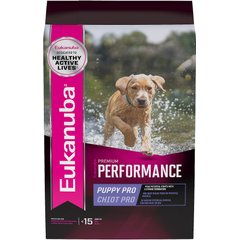How to Best Treat Arthritis in Dogs
By Ashley Gallagher, DVM
Arthritis is one of the most common ailments affecting dogs, especially middle aged to senior dogs. Whether the dog is large or small, arthritis can be a source of chronic pain and negatively affect quality of life. Also known as degenerative joint disease, arthritis occurs when a joint is unstable and causes the bones to move abnormally within the joint. Cartilage lines the joints, acting as a barrier between bones. Over time this abnormal movement erodes the cartilage and bone begins rubbing against bone, creating chronic inflammation and pain.
Ways to Treat (and Prevent) Arthritis in Dogs
The absolute best way to prevent arthritis in dogs is to keep your pet at a healthy weight. This will reduce the stress that the body places on joints and help keep things moving like they should. If you notice that your dog has some “extra padding” around the ribs or belly, you should speak with your veterinarian immediately to see if your pet is overweight. Your veterinarian will also be able to help you with a weight loss plan.
Therapeutic diets, found at your veterinarian’s office or at many online pet specialty retailers, are a great option for pets with mobility issues. These diets can be specifically formulated to address many health issues, including arthritis. For example, therapeutic pet foods with Omega 3 and 6 fatty acids balanced in a specific ratio can reduce inflammation and target pain pathways in dogs. When used properly under the supervision of a veterinarian, therapeutic diets can help arthritic pets resume running, walking, and jumping in as little as a few weeks. Your veterinarian may also recommend a therapeutic diet with glucosamine and chondroitin sulfate, two commonly used nutritional supplements that support joint health by maintaining the cartilage and repairing any defects that might be present.
You may be tempted to supplement your pet’s current diet with fatty acids, glucosamine or chondroitin on your own, but be aware that it is difficult to get the proper balance with the diet. This will also add unwanted calories, which is undesirable when you are trying to keep your pet slim. Therapeutic diets that are specially formulated for arthritis have a lower overall calorie count and the additional calories from the fatty acids have already been factored in. Therefore you have a much lower risk of overloading your pet with calories, which can lead to weight gain.
Pets with arthritis aren’t necessarily incapable of exercising. Staying active actually helps many arthritic pets who suffer from achy bones and joints. It is, however, vital to consult your veterinarian before beginning an exercise regimen. Exerting your dog too much or too quickly may inadvertently do more harm than good.
If the above methods don’t do the trick, it may be time to discuss pain medication with your veterinarian. Joint disease should be addressed on multiple fronts in order to make your pet as comfortable as possible. But as the saying goes, prevention is always the best medicine. Keep your pet slim. And if you do notice some stiffness, limping or slowing down in your dog, talk to a veterinarian right away about therapeutic diets and other arthritic treatments available for your pet.
Image: Jaromir Chalabala / via Shutterstock
Vet Recommended Dog Food
- Eukanuba Premium Performance Puppy Pro Dry Dog Food, 4-lb bag$25.99Chewy Price
- Purina Pro Plan Bright Mind Adult 7+ Chicken & Rice Formula Dry Dog Food, 5-lb bag$24.68Chewy Price
- Purina Pro Plan Adult Weight Management Shredded Blend Chicken & Rice Formula Dry Dog Food, 34-lb bag$77.48Chewy Price
- Hill's Science Diet Adult Lamb Meal & Brown Rice Recipe Dry Dog Food, 33-lb bag$83.99Chewy Price




